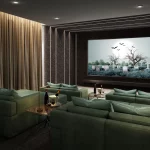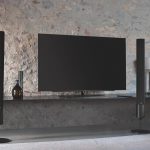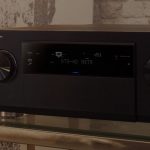The ultimate home theater experience certainly begins with all the audio-video electronics, but it should always end with a small investment dedicated to soundproofing the room. This term refers to the set of interventions on the walls, floor, and ceiling designed to prevent sound from propagating into adjacent or surrounding rooms. Good soundproofing is essential for several reasons:
- Noise Containment: When sound vibrations impact objects, a portion is absorbed but the rest bounces back, especially the very low ones that are the most difficult to handle. Others slip through doors, ventilation grills and false ceilings. Proper treatment with modern materials prevents them from spreading to other rooms in the house, or even reaching neighboring houses. Thus the full power of the system can be enjoyed without bothering others.
- Better Acoustic Efficiency: The speakers sound better, the surround sound is more convincing, and in general the experience brings out many small sensory nuances that would otherwise be lost. By adopting the right sound-absorbing materials, in fact, mid- and high frequencies are absorbed and stop bouncing around the room, helping to cut down on echoes and annoying vibrations.
In principle, sound insulation is done by differences in materials and mass, namely by thickness. To achieve the purpose there are commercially available 4/5 mm rubbers that are very dense and almost as heavy as lead, and therefore incredibly sound-absorbent. This rubber is often overlaid with a layer of rock wool plus 1 or more layers of plasterboard, preferably of different thickness. But before proceeding further, it is important to fix some key concepts.
The Basics of Soundproofing

To understand how a home theater sound insulation system should be constructed, one must first understand the physical laws that govern the propagation (and mitigation) of sound. The mission, it is understood, is to prevent user-side vibrations from reaching the interior walls and ceiling.
As mentioned earlier, however, there are two ways in which sound propagates from the Home Theater room to the outside:
- Direct Transmission: Vibration impacts the walls and propagates along the foundation. Every conjunction is a vehicle for unwanted vibration.
- Indirect Transmission: The walls are hit by the sound waves and vibrate accordingly, transmitting the kinetic energy to the air in the wall cavities, which in turn transmits it to the other surfaces it encounters. Basically, it is as if the walls become the giant diaphragm of a speaker.
In order to properly insulate a room, therefore, attention must be paid to acoustic physics phenomena called Damping (or attenuation), Decoupling and Mass from which derive 4 possible ways of soundproofing a room, namely:
Attenuation
This technique involves the application of semi-solid panels on the walls (e.g., MDF, or plywood or gypsum board), by which it dissipates the kinetic energy of sound by converting it into heat before it can generate further acoustic waves; it is the cheapest soundproofing material, and therefore the most widely used, but it is also less efficient than others. For it to be effective, it must be applied to all components of the room, including the floor, ceiling, walls and door.
Density Addition
As the density of the walls increases, the absorption of sound waves also increases; therefore, it is best to always create thick concrete walls and, where this is not possible, at least employ high-density materials at a later stage.
Decoupling
In fact, the work consists of adding a wall of plasterboard spaced from the existing walls and thus creating a “floating room,” a room within a room.
Using this technique, vibrations can be blocked before they pass through the wall by creating a gap between the two surfaces, preferably filled with insulation material (glass wool, cellulose or high-density rock wool are very cheap). Material that should always have a lower density that allows sound waves to interact with its fibers, thus losing some of the energy.
Filling Empty Spaces
Every smallest gap in a room allows sound to escape. For this reason, it is important to seal gaps as much as possible with acoustic sealants, rubber gaskets, door knockers, and so on. It is a fine job that requires expertise and attention to detail.
Good Standards

Ideally, the soundproofing intervention to be preferred is during the construction of the hall: it works better, costs less, and gives more options. Where this is not possible, soundproofing of an existing hall can still be appreciably improved even after its construction. In the latter case, the choice will fall on sound-absorbing panels, so-called “bass traps,” and especially door sealants; it sounds unbelievable, but a 1 percent gap between the door and the floor releases more than 50 percent of the sound.
Door and window frames must be properly sealed and insulated with double glazing or double-glazing; the services of professionals in the field are essential here.
The ceiling should also be soundproofed, and lights should be adopted that impact sound propagation as little as possible, leaving no cavities or gaps. So also pay attention to HVAC ducts and grilles for heating, ventilation, and air conditioning.
The floor of the room is connected to the walls, which in turn are connected to the foundation and other rooms; any self-respecting home theater will have to take into account these direct vibrations (the patter of people moving around) and indirect vibrations (sound transmitted by the phenomenon of resonance, the same as the sound of the sea in seashells). Fortunately, the solution is simple and covers several possibilities: Interlocking carpets, floor insulators, sound-absorbing compounds, rubber-based materials, etc.
Finally, the most difficult sounds to deal with are mainly low frequencies that pass quietly through untreated floors and walls; a wooden floor with underlying concrete screed is more insulating than a floor covered with tiles. And utmost alertness in the presence of hollow bricks, which are very bad in terms of soundproofing
Living Acoustic Treatment
Acoustic treatment in living rooms is mainly implemented with drapes, carpets and curtains, or with sound-absorbing elements (there are wall, hanging or floor-mounted ones). For simple music listening, in general, the materials and accessories found in the vast majority of living rooms are fine; for enjoying movies and video content, however, the absorbing part needs to be higher: therefore, more drapes and carpets need to be added.
The sworn enemy of Living Media Rooms are blank walls and ceramic floors. In this case, drapes and fabrics may not be enough. To achieve adequate acoustics, therefore, ad hoc acoustic panels must be installed.
Home Theater Treatment
In the case of a home cinema, it is imperative that the room be absorbent, and therefore implement all possible systems and technologies to achieve the purpose in every component, including the floor with carpeting. The walls, on the other hand, exactly as in the Cinema, should as a rule be covered with appropriate materials such as velvet; the only exceptions are the areas with sound-transparent materials covering the speakers.
The latter of are usually located on the side walls, on the wall behind the viewer, and on the video wall.
Soundproofing: Most Common Mistakes

It is easy to say “let’s insulate a room.” Unfortunately, getting good soundproofing is not just a matter of buying some panels, some rock wool, and a curtain. You have to understand what you are doing, and especially know where to go about it. There are a number of evaluation errors that novice users make all the time, leading to potential waste of money:
- Mistake 1: Not all noises are the same. Technically, they are all vibrations, but some noises propagate through air, while others propagate through walls, floors, and roof. Each type requires specific intervention and materials.
- Mistake 2: That wall is letting noises through. Even if you get the distinct impression that noises are coming from a specific portion of a wall, it is often the fault not only of the wall in question, but also of other nearby elements that act as sound bridges. Isolating only the wall, without considering the big picture, can lead to disappointing results.
- Mistake 3: Believing that insulation solves everything. When used correctly, dirRoccia,glass wool, rubber and cork make a valuable contribution; but they are only part of the solution to the problem. It is the intervention as a whole that makes the difference, and here we come to the biggest mistake of all.
- Mistake 4: Improvise with DIY. Having arrived at this point, many people involve their mason friend, the drywaller or the painter who gave the house the color; in some cases they attempt do-it-yourself (incompetence for incompetence, at least it saves money) but that would be a gross mistake. Soundproofing requires specific skills, as well as a comprehensive analysis of the room and the structure in which it is grafted at the architectural level. This is the only way to be certain of obtaining the desired result.











































